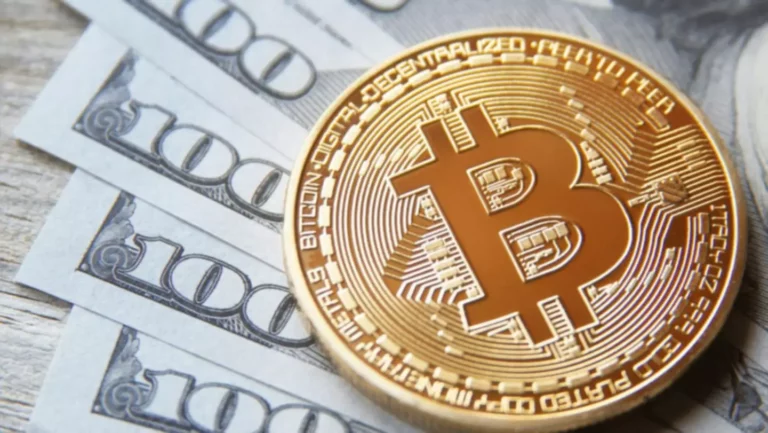Know Everything about Crypto Liquidity Pools
Azi in istorie
Thus providers are further incentivized to “stake” or lock the LP tokens gained from contributing to the pools for gaining further rewards. One of the basic principles of LP is that it wants to maintain the value stored in the pool. Since the tokens are provided in pairs, the LP smart contract makes sure that the total value remains the same. Learn about Impermanent Loss, a crucial concept in DeFi liquidity pools, and how to navigate and leverage it. The primary goal of liquidity pools is to facilitate liquidity that is necessary for trading activity in the pool. Beyond the basic swapping functionality, Sushiswap offers a range of products like SushiBar, where you can stake $SUSHI tokens to earn more $SUSHI, which is also called yield farming.
This can enable them to potentially do something malicious, like taking control of the funds in the pool. Read our DeFi scams article to try and avoid rug pulls and exit scams as best you can. To understand how liquidity pools are different, let’s look at the fundamental building block of electronic trading – the order book. Simply put, the order book is a collection of the currently open orders for a given market. Decentralized Finance (DeFi) has created an explosion of on-chain activity. DEX volumes can meaningfully compete with the volume on centralized exchanges.
Liquidity Pool Tokens
As a result, the decline in value relative to stablecoins could exceed the increase in value from a high APY, resulting in unexpected losses. DeFi, or decentralized finance—a catch-all term for financial services and products on the blockchain—is no different. Of course, the liquidity has to come from somewhere, and anyone can be a liquidity provider, so they could be viewed as your counterparty in some sense. But, it’s not the same as in the case of the order book model, as you’re interacting with the contract that governs the pool.
Liquidity pools are an essential part of decentralized exchanges as they provide the liquidity that is necessary for these exchanges to function. Tranching is another, even more, cutting-edge application of liquidity pools. It’s a traditional finance concept that involves categorizing financial goods based on their risks and returns.
Protocol
This means you can trade assets at any time without having to wait for a matching buyer or seller. This usually involves depositing an equal value of both tokens that make up liquidity in the pool. In a nutshell, the price is determined https://www.xcritical.com/ by how the ratio between the two tokens in the pool has been affected after a trade. DEXs embrace a non-custodial structure in the absence of intermediaries. This means that traders will retain custody of their cryptocurrency.

A large pool and less trade mean that the cost of tokens will decrease. This trading model’s major disadvantage is when both parties do not agree on a fair price; the trade is at risk of being off. Another disadvantage is the scenario where there is a shortage of coins, making it difficult to leave the market to the forces of demand and supply. To salvage any of these situations, the market makers are introduced to facilitate trade between parties.
The Role of Liquidity Providers
This means users can simply exchange their tokens and assets using liquidity that is provided by users and transacted through smart contracts. That’s why most liquidity providers earn trading fees and crypto rewards from the exchanges upon which they pool tokens. When a user supplies a pool with liquidity, the provider is often rewarded with liquidity provider (LP) tokens. Trading with liquidity pool protocols like Bancor or Uniswap requires no buyer and seller matching.

When participating in yield farming, it is important to consider the potential IL one may incur. The rewards earned from yield farming may not be enough to compensate for the loss in value of the initial deposit due to IL. Therefore, it is crucial to carefully assess the potential risks and rewards when selecting yield-farming options. Impermanent loss occurs when Liquidity Pools in Crypto the price of tokens within a liquidity pool changes after you’ve deposited them. Whether you’re a trader looking for more flexibility or an investor seeking new avenues for income, liquidity pools are an essential part of your journey. That’s why I’ve put together this comprehensive guide to break down the mechanics of liquidity pools in DeFi crypto exchanges.
How do AMMs determine token prices?
Nothing contained herein shall constitute a solicitation, recommendation, endorsement, or offer by Crypto.com to invest, buy, or sell any coins, tokens, or other crypto assets. Returns on the buying and selling of crypto assets may be subject to tax, including capital gains tax, in your jurisdiction. Any descriptions of Crypto.com products or features are merely for illustrative purposes and do not constitute an endorsement, invitation, or solicitation.
- To salvage any of these situations, the market makers are introduced to facilitate trade between parties.
- DEXs require more liquidity than centralized exchanges, however, because they don’t have the same mechanisms in place to match buyers and sellers.
- There are seven separate pools on the platform, each with a unique ERC-20 pool pair.
- A slightly more advanced concept to learn is “superfluid staking”.
- To create a better trading experience, various protocols offer even more incentives for users to provide liquidity by providing more tokens for particular “incentivized” pools.
- However, the network isn’t able to handle the throughput in its current form.
Before the creation of LP tokens, all assets used in the Ethereum ecosystem were inaccessible during their usage. When it comes to DeFi, this concern can be solved by creating easily convertible assets in AMMs using LP tokens. Then, you need to confirm that you have the appropriate amount for the two assets you intend to deposit. MoonPay also makes it easy to sell crypto when you decide it’s time to cash out. Simply enter the amount of the token you’d like to sell and enter the details where you want to receive your funds. To get started on your liquidity pool journey, simply buy crypto via MoonPay using a card, mobile payment method like Google Pay, or bank transfer.
What Are Liquidity Pools & How to Make Money from Them
Liquidity pools make it easy for liquidity providers to generate a yield on their crypto holdings. For instance, an Ethereum HODLer could contribute their ETH to a liquidity pool to generate income over time. These capabilities resolve a common criticism of cryptocurrencies—their inability to generate yield like conventional investments. And in 2018, Uniswap, now one of the largest decentralized exchanges, popularized the overall concept of liquidity pools. This platform will find the best pools and manage your portfolio, and it’s non-custodial, e.g it will not take away your funds.
This makes trading difficult because it takes both parties to reach an agreement before a trade can be made. As we’ve mentioned, a liquidity pool is a bunch of funds deposited into a smart contract by liquidity providers. When you’re executing a trade on an AMM, you don’t have a counterparty in the traditional sense. Instead, you’re executing the trade against the liquidity in the liquidity pool.
Fees
Liquidity pools are used to facilitate decentralized trading, lending, and many more functions we’ll explore later. When you’re ready to withdraw your assets, your liquidity tokens are burned (or destroyed), and in return, you receive a portion of the liquidity pool’s assets based on your share. Traders can then buy or sell tokens from these pools, which changes the balance of tokens in the pool and therefore, the price. Each trade incurs a small fee, which is added to the pool, rewarding liquidity providers. Beware of volatile tokens, pump and dump schemes, rug pulls, and APY nosediving.
The first step is to choose a solid platform and the best pools to ensure a steady and safe income. Liquidity pools offer an excellent way to earn passive income with crypto. The first step is selecting a good platform and selecting the best pools for stable and secure income. In staking, you put up collateral to pay into a protocol you’re supporting. When an investor supplies liquidity to a pool, that individual makes money by allowing others to use that liquidity for transactions.
But remember, while liquidity pools offer exciting opportunities for earning and trading, they’re not without risks. They can remove it or transfer them from the pool at their discretion. If you have contributed crypto assets that are worth $100 to a pool that is worth $1000, you own 10% of the liquidity pool. Because of this, you are entitled to 10% of the LP tokens of that liquidity pool. There won’t be much change for crypto liquidity pools unless DeFi addresses the transactional aspect of liquidity.

